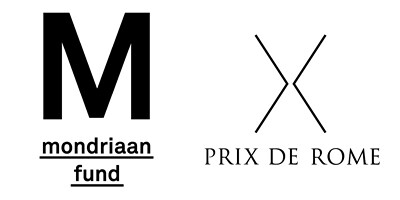Commissioner: Mondriaan Fund
Exhibition Prix de Rome 2017
until February 25, 2018
Kunsthal, Westzeedijk 341, Rotterdam
Artist Rana Hamadeh (Beirut/Lebanon, 1983) received the Prix de Rome Visual Arts 2017, the oldest and most generous award in the Netherlands for visual artists under the age of 40, from the Dutch Minister of Education, Culture and Science, Ingrid van Engelshoven. Hamadeh received this award for a new act as part of her opera project The Ten Murders of Josephine. The award comes with a 40,000 Euros cash prize and a work period at the American Academy in Rome.
The international jury unanimously selected Rana Hamadeh, an artist who creates her own language and dissects and re-arranges history and gives it a voice. The theme that lies at the basis of this work is urgent: the need to become aware of the missing voice in testimonies and the ways in which the elimination of voices determines the view of our past. In an overwhelming, cacophonous installation she sweeps the audience into a penetrating epic full of intense experiences.
Rana Hamadeh has lived and worked in Rotterdam since 2006. Whereas she previously operated as a scientist, historian or activist who reported on her research in lectures and performances, in her new opera project she adamantly chooses the position of visual artist. And by targeting her audience in this—even poetic—way, she creates a poignant presentation in which the visitor is overwhelmed by sound, technology and text in a theatrical setting that is in keeping with the subjects she addresses. The first part of the opera can be regarded as a living, constantly changing sound play and is on show at Witte de With Center for Contemporary Art in Rotterdam, until December 31, 2017. The work she made for the Prix de Rome is an act from the opera, which was performed as a whole at Schouwburg Rotterdam.
The other nominees for this year’s Prix de Rome were Melanie Bonajo, Saskia Noor van Imhoff and Katarina Zdjelar. The four finalists were judged on the basis of new work realised during a five-month work period. The jury is impressed by what they have achieved during the work period and by the way they have taken their art out of the studio environment and created it in different work forms and collaborations.
Melanie Bonajo’s art stands out because of the catching way it communicates. The jury appreciates the openness of her work and how she shares her perspective of the world and the threats it poses to vulnerable groups.
Saskia Noor van Imhoff’s art is layered and the intuitive way in which she presents the objects challenges the audience to think about where they are. Interestingly, Van Imhoff used the Prix de Rome as an opportunity to take a next step in her work and further develop herself.
Katarina Zdjelar also breaks new ground with the work she made for the Prix de Rome. For the first time she added spatial interventions by applying woodcuts in the floor. The jury appreciates the intimacy and concentration that Zdjelar’s film installation evokes, for example by zooming in on the hands of her performers.
Jury
The jury for the 2017 award is chaired by Birgit Donker (Director of the Mondriaan Fund). Its members are Ferran Barenblit (Director MACBA), Mariette Dölle (Director Museum Kranenburgh), Folkert de Jong (visual artist), Petra Noordkamp (visual artist) and Francesco Stocchi (curator Museum Boijmans Van Beuningen).
Prix de Rome
The Prix de Rome dates back to 1808 when Louis Napoleon introduced the Prix de Rome in the Netherlands to promote the arts. Although the award has regularly been renewed, the aim is still to trace talented visual artists and encourage them to develop and increase their visibility. Since 2012, the Mondriaan Fund has been responsible for the award.
For images and a copy of the jury report please visit our website.



